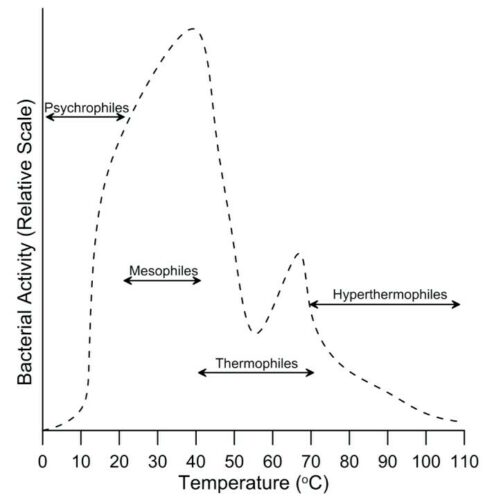Microbial gas
Introduction

Primary microbial gas is formed as part of the initial diagenetic sequence of sedimentary organic matter. There are a number of factors that control the rate of primary microbial gas generation via methanogenesis. Key among these factors is temperature (Belyaev et al., 1983). Peak microbial activity occurs between 35 and 45°C (mesophiles).
In addition to the mesophiles, there also exist psychrophiles, thermophiles, and hyperthermophiles, but neither of these are considered important to the formation of commercial gas accumulations. For a detailed review of microbial gas generation and accumulation see Katz, 2011. The molecular and isotopic composition of gases can be measured to identify microbial gas.
Molecular and isotopic composition
Primary microbial gases are dry, where ethane content is typically less than 0.2 %. Methane from microbial sources has a light carbon isotopic signature (< –60‰) and moderate deuterium content (–150 to –250‰). At normal reservoir depths, this gas originates entirely from CO2 reduction. There is a shallow source, from acetate fermentation, which is characterised by δ13C in the range –40 to about –72‰ and δD in the range –250 to –400‰, but it is not usually important in petroleum exploration (Schoell 1988; Whiticar 1999).
Minor amounts of ethane and propane can also be produced, which can be apparent where thermogenic contribution is absent or very minor (Oremland 1981; Hinrichs et al. 2006); it may exhibit a light carbon isotopic signature. Where there is no additional contribution from thermogenic gas that can obscure a microbial signature of all but methane, volume ratios can sometimes help confirm a biogenic source: although C1/C2 ratios can vary widely (~4–100), the C2/C3 ratio is ~1 (Hinrichs et al. 2006), compared to a typical thermogenic value of ~10.
At low concentrations, aqueous dissolution can have a major impact on methane abundance. Readily identifiable occurrences of isotopically light, microbial C1–C3 hydrocarbons are most likely to be restricted to the topmost 200–300 m of the sediment column, as typically sampled by DSDP and ODP coring studies.
References
Belyaev, S.S., Wolkin, R., Kenealy, W.R., DeNiro, M.J., Epstein, S., Zeikus, J.G., 1983. Methanogenic bacteria from the Bondyuzhskoe oil field: general characterization and analysis of stable-carbon isotopic fractionation. Applied and Environmental Microbiology 45, 691–697.
Hinrichs, K.-U., Hayes, J.M., Bach, W., Spivack, A.J., Hmelo, L.R., Holm, N.G., Johnson, C.G., Sylva, S.P., 2006. Biological formation of ethane and propane in the deep marine subsurface. PNAS 103, 14684–14689.
Katz, B.J., 2011. Microbial Processes and Natural Gas Accumulations. The Open Geology Journal 5, 75–83.
Oremland, R.S., 1981. Microbial formation of ethane in anoxic estuarine sediments. Applied and Environmental Microbiology 42, 122−129.
Schoell, M., 1988. Multiple origins of methane in the Earth. Chemical Geology 71, 1–10.
Whiticar, M.J., 1999. Carbon and hydrogen isotope systematics of bacterial formation and oxidation of methane. Chemical Geology 161, 291–314.